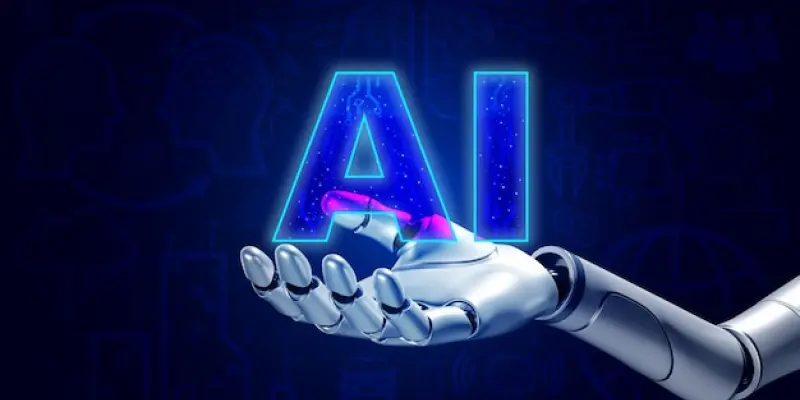In the contemporary era marked by rapid urbanization and burgeoning digitalization, traffic systems are undergoing a significant transformation. The amalgamation of artificial intelligence (AI), the Internet of Things (IoT), and comprehensive data platforms forms the core of intelligent traffic systems, which aim to enhance traffic flow efficiency, safety, and sustainability. The modern deployment of IT solutions has not only facilitated more efficient traffic systems but also contributed to an improved urban quality of life by minimizing noise, emissions, and optimizing resource use. Intelligent traffic management is pivotal to the digitalization of mobility and the sustainable evolution of urban spaces. Amir Karimi, an IT entrepreneur and technological analyst, underscores the revolutionary impact of AI on modern traffic control systems. These innovative technologies present both opportunities and challenges across technological, societal, and infrastructural planes, which are examined in the ensuing sections.
AI-based Traffic Management and IoT Sensor Technology
The integration of AI into traffic management has heralded a paradigm shift, particularly in the operation of traffic lights. Unlike traditional traffic lights that rely on predetermined schedules, AI-powered traffic lights utilize deep reinforcement learning to dynamically adjust switching behavior in response to real-time traffic conditions. Karimi highlights the promising potential of such technology through pilot projects like the one scheduled for July 2024 in Ellwangen, Baden-Württemberg, where AI will manage traffic across twelve traffic lights. This intelligent control mechanism is expected to improve traffic flow by 10 to 15 percent, significantly reducing congestion, noise, and CO₂ emissions. A vital component of dynamic traffic optimization is a robust sensor infrastructure. Integrated intelligent monitoring systems within traffic lights, road signs, and surfaces continuously collect data on traffic flow, congestion, and accidents. IoT sensors facilitate precise tracking of traffic flows and identification of different vehicle types like bicycles, cars, and trucks, thus providing accurate reporting to central traffic management systems. This approach effectively reduces congestion, optimizes traffic flow, and minimizes emissions. The continuous input from IoT sensors ensures that traffic management systems have real-time data, contributing to informed decision-making and strategic interventions that enhance overall urban mobility.
Data Platforms as the Foundation of Mobility 4.0
Modern, connected mobility hinges on a crucial resource: data. Achieving sustainable traffic planning, effective traffic control, and informed individual transportation choices necessitates reliable real-time information access. Addressing this requirement, the Federal Ministry for Digital and Transport has established Mobilithek, a central platform for digital mobility data. Replacing the Mobility Data Marketplace, Mobilithek interlinks various data sources, ranging from geoinformation to timetable data, and new data hubs like the Mobility Data Space (MDS) and European Mobility Data Space (EMDS). This comprehensive data ecosystem facilitates multi-stakeholder data access through a singular platform.
Real-time data, in particular, play a pivotal role in these platforms by providing the most current traffic situation insights. The continuous sharing of information from connected vehicles, intelligent traffic lights, and other participants ensures up-to-date data availability. Furthermore, these data serve as training inputs for AI models, enhancing the realism of traffic simulations. Nevertheless, the intelligent deployment of data faces challenges, primarily due to non-standardized interfaces and data formats. Karimi identifies standardized data formats and open interfaces as essential infrastructural elements for the success of Mobility 4.0, ensuring smooth data flow into intelligent applications, encompassing municipal traffic management and autonomous driving.
Autonomous Vehicles and Platooning in Freight Transport
The advent of autonomous vehicles is fundamentally reshaping transportation dynamics. More than half of Germans (54%) acknowledge the benefit of self-driving cars in reducing fuel consumption via optimized routes and speeds, and nearly half foresee smoother traffic flows for all vehicles. Recognizing this potential, the German government has adopted a comprehensive strategy for autonomous driving in 2024, supplemented by the world’s first legal framework for autonomous driving enacted in 2021. Public and freight transport are central to this strategy. Karimi posits that autonomous buses and trucks can enhance traffic safety and connectivity in rural areas while addressing the skill shortage in the transport sector. Early pilot projects of autonomous shuttles and bus fleets in European cities offer valuable practical insights, and rising societal acceptance coupled with successful test runs buttresses the reliability and safety of autonomous systems.
In freight transport, the concept of platooning—electronically coupled truck convoys—opens new vistas. The lead truck dictates the pace and direction, with following trucks automatically synchronizing braking and steering. This arrangement fosters a slipstream effect, culminating in fuel savings of up to 10%. Moreover, intelligent driving systems are superior to human reaction times in preventing accidents, thereby enhancing safety. Despite the advanced technological development of platooning, legal barriers presently restrict widespread adoption. Considering the logistics sector employs approximately 3.3 million people in Germany and generates annual revenues of about 280 billion euros, platooning’s potential for efficiency and sustainability is immense. Karimi emphasizes that connected freight convoys could revolutionize logistics, rendering goods transport on highways more efficient and environmentally friendly.
Outlook
The integration of AI into traffic management represents a significant shift, especially in how traffic lights operate. Traditional traffic lights follow fixed schedules, but AI-powered lights use deep reinforcement learning to adjust their switching in real-time based on current traffic conditions. Karimi points out the promising potential of this technology, citing a pilot project set for July 2024 in Ellwangen, Baden-Württemberg, where AI will control twelve traffic lights. This intelligent system is projected to enhance traffic flow by 10 to 15 percent, thus reducing congestion, noise, and CO₂ emissions.
A key element of this dynamic optimization is a robust sensor infrastructure. Intelligent monitoring systems integrated into traffic lights, road signs, and surfaces continuously gather data on traffic flow, congestion, and accidents. IoT sensors enable precise tracking of traffic and identification of various vehicle types like bicycles, cars, and trucks, providing accurate information to central traffic management systems. This method effectively lessens congestion, optimizes traffic flow, and cuts emissions. Real-time data from IoT sensors ensure that traffic management systems make informed decisions and strategic interventions for better urban mobility.

